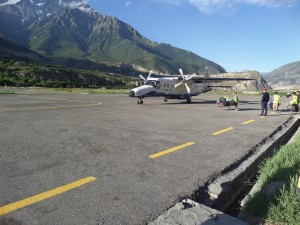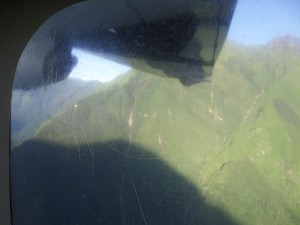My summer pilot project here in Nepal is soon coming to a close. As monsoon earnestly sets in, I now find myself turning to the inevitable task that awaits every anthropologist conducting long-term fieldwork: organizing my notes and figuring out what comes next.
My small pocket notebook is already filled to the brim with jottings, sketches, impromptu maps, informant contact information, and questions for further inquiry. My Shaligram Stone sketchbook is starting to resemble a cross between the works of John James Audubon and Jackson Pollock, and my project book (where I try to keep my summaries brief and my details minimal) an exercise in what might be bibliographic flowcharts. I am often surprised that publishable articles and books ever manage to emerge from the tangle of highlights and marginalia that so often comprise writing in the field. Inevitably, something must be left out.
My personal system tends to rely on color-coded Post-It Notes to flag certain parts of my field book by certain pre-determined categories (such as, Pilgrimage Economy, Ritual Practice, or Deity Care). I rely on my diary for more contextual or anecdotal narratives, such as “at this point, I was to find myself sailing through the streets of Kathmandu at 30 miles an hour, clutching the back of a motor scooter with both hands, as my informant attempted to patiently explain the differences in Shaligram colors over the sound of honking horns, screeching tires, and high monsoon winds.” And, of course, I tend to rely on my sketchbook and my photos for the more visual representations of the things I set out to describe. Taken together, something of a theme begins to emerge. At least, that’s what we hope happens.
In the end, it has been a productive and fantastic beginning to what, I think, will ultimately prove to be a meaningful contribution to the anthropology of South Asia and to our understandings of Hindu and Buddhist religious practice. Already, many of my informants and friends here in Nepal are eager to see a Shaligram book, since virtually no such work currently exists that draws Shaligram practice together in its entirety (from texts new and old, to current practices, to pilgrimage, to global distribution and sacred economy). However, if it were possible to manage this *without* setting foot again on another tiny, tumultuous, mountain airplane…I would be all the more grateful for it. Though something tells me, I’m just not that lucky.




Mary,There’s so much information out there on what ahptrotologisns exactly do that I find it confounding, even shameful, that you’re asking someone to tell you. We don’t owe you anything. It is your responsibility to seek out what interests you. But to answer your question since you seem to be too lazy to do for yourself, ahptrotologisns do a lot of stuff, and often specialize in one of four subfields, focusing on either language, culture, prehistoric peoples, or how humans have evolved. They study many different things and use different tools to carry out their studies.Most people do write articles, and contribute their findings and research back to the field and general public. Some applied ahptrotologisns work for corporations and help them make their products better or understand their cliente8le. I think you need to understand that most ahptrotologisns are foremost academics. They don’t necessarily make a product like dish soap or toy guns, so reporting on their observations is their primary output. What do you mean by do they have to move to their job? Uhh, Yes. Everyone that I know who has an anthropology degree and works as one has to move at some point in their life. What kind of question is that?Kambiz